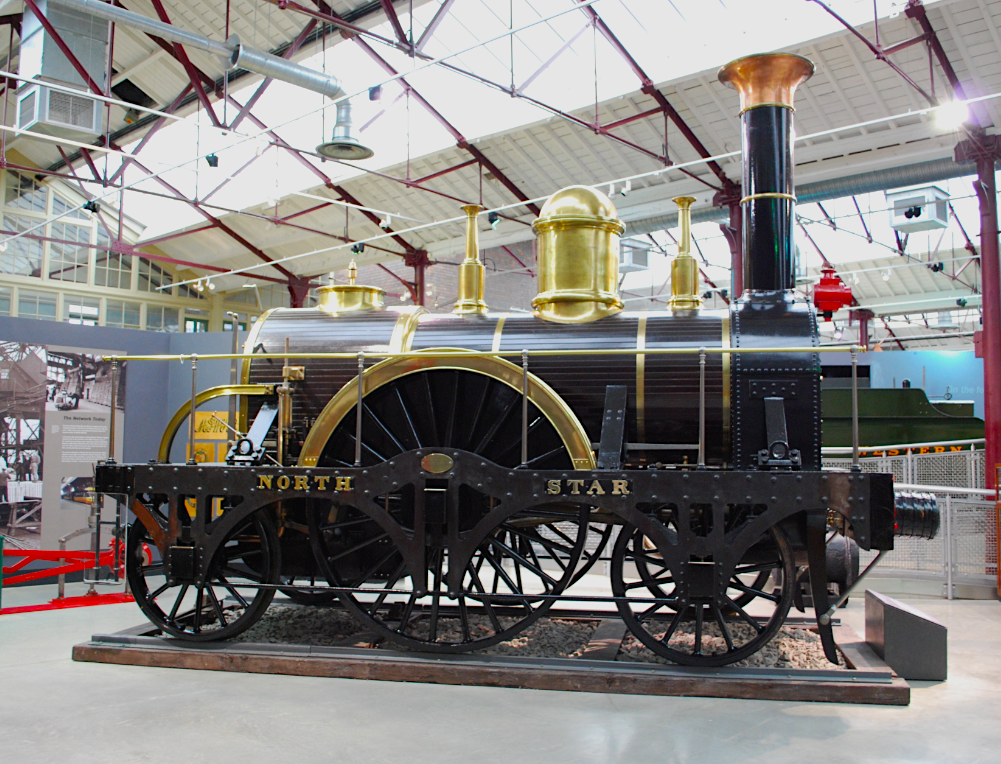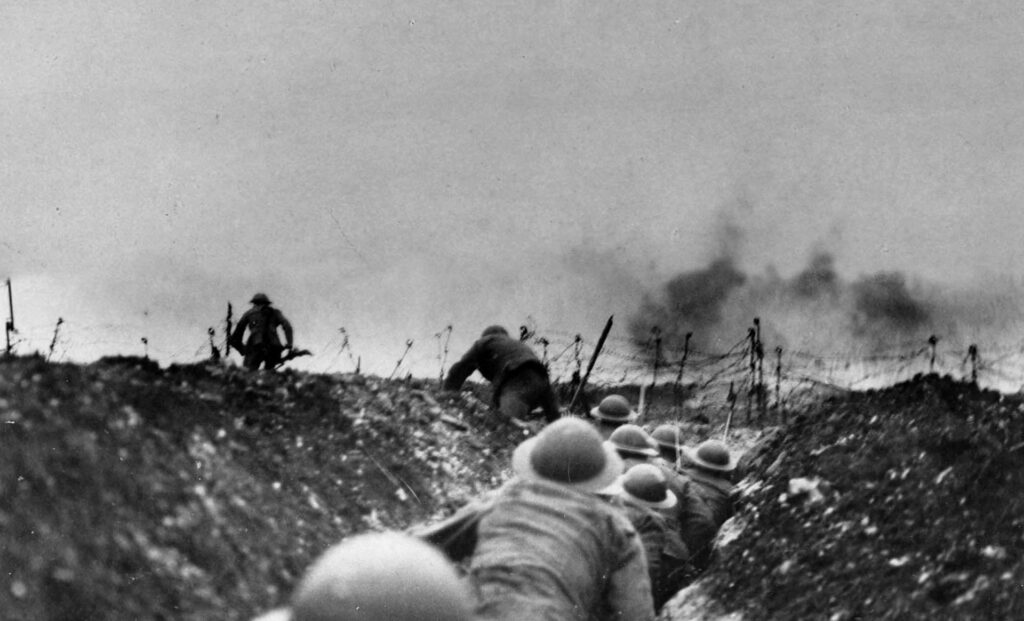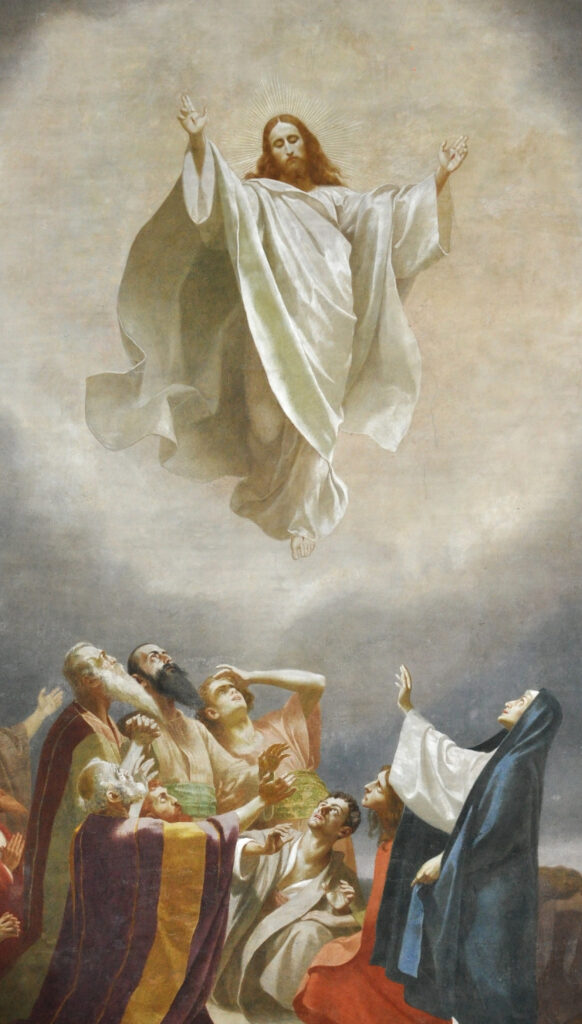
The Epsom Derby is more than just a horse race; it’s a monumental event steeped in centuries of history, culture, and social evolution. While the fashion, particularly the flamboyant hats, often captures headlines and sets trends, the true spectacle of the Derby extends far beyond sartorial statements. It’s a tapestry woven with ancient origins, medical breakthroughs, pivotal social movements, and technological advancements that have collectively cemented its place as one of Britain’s most cherished and attention-demanding traditions.
From its humble beginnings on the chalky expanse of Epsom Downs to its present-day grandeur, the Derby has consistently reflected and influenced the broader narratives of English life. It’s a place where royalty mingles with the masses, where sporting prowess meets significant historical events, and where the very fabric of a town has been shaped by the thunder of hooves and the roar of the crowd. Understanding the Epsom Derby truly means delving into the rich layers of its past, uncovering the milestones that have made it an enduring symbol of British heritage and excitement.
Join us on a journey through 12 iconic chapters that have truly demanded the world’s attention, moments that transcended the racetrack itself to leave an indelible mark on history. We’ll explore the deep roots that anchored Epsom, the breakthroughs that brought it fame, and the events that forever changed the face of this legendary spectacle.

1. **The Ancient Origins of Epsom**The story of Epsom, the very setting for the legendary Derby, reaches back further than many might imagine, intertwining with the deep tapestry of English history. Our records show the town first emerging into written history as “Ebesham” in the 10th century, a name that likely whispers of its Saxon roots, perhaps signifying the “home” or “settlement” of a Saxon landowner named Ebba or Ebbi. This ancient naming convention provides a fascinating glimpse into the foundational layers of the community, hinting at a structured, perhaps even revered, place long before the thundering hooves of racehorses graced its Downs.
While the Domesday Book of 1086 registers it as “Evesham,” and various spellings like Ebbesham, Ebesam, Epsam, and Epsham followed, the evolution to the modern “Epsom” by 1718 showcases a linguistic journey mirroring the town’s development. This early naming also suggests alternative interpretations, with “ebbe,” the Old English word for “flow,” potentially referring to an intermittent stream or spring. Such natural features would have been crucial for any early settlement, underscoring the intimate connection between Epsom’s geography and its very identity, long before any formal racing began.
Indeed, the earliest hints of human activity stretch back to the mid-Bronze Age, with archaeological findings such as pits, ditches, and post holes in Long Grove Road suggesting agricultural use and the potential presence of an established prehistoric settlement north of the town centre. This continuous thread of human habitation, extending into the early Iron Age with pottery sherds and worked flints, paints a picture of a land consistently valued and occupied, gradually evolving from an ancient agricultural hub to the vibrant town we know today, a journey that set the stage for its future fame.

2. **The Healing Springs and Epsom Salts**Before the Derby captured widespread imagination, Epsom was renowned for an entirely different kind of attraction: its mineral springs. The traditional account credits Henry Wicker, a local farmer, with the discovery in 1618, observing that his cows curiously refused to drink from a particular slow spring on Epsom Common. However, local physicians had already recognised the distinct chemical properties of the water decades prior, noting its “bitter purging salt” as early as 1603, and even linking bathing in a pond to the west of the town centre with cures for ulcers and other disorders in late-Elizabethan times.
This remarkable natural resource quickly transformed Epsom into a bustling spa town, attracting visitors from far and wide seeking its therapeutic benefits. The initial facilities, rudimentary though they were, appeared in 1621 with a wall around the spring and a shed for invalids. Early accounts, like that of Abram Booth in 1629, describe visitors taking “a few glasses of the mentioned water,” noting its unique taste and “very good effect.” The waters, later scientifically identified as rich in magnesium sulphate, became famously known as “Epsom salts,” a name still recognized globally today.
The spa’s popularity soared, drawing prominent figures of the era. Charles II himself became a regular visitor after the Restoration of the monarchy, and it was here that he famously met Nell Gwyn, who would become his mistress. Writers such as John Aubrey, Samuel Pepys, and Celia Fiennes all recorded their visits, adding to the spa’s allure and providing invaluable historical testimonies. However, by the mid-1720s, competition from rival spa towns like Bath and Tunbridge Wells, coupled with the economic fallout of the South Sea Bubble, led to a rapid decline, though the legacy of “Epsom salts” endures.

3. **The Birth of Organised Horse Racing**While the spa brought initial fame, it was the exhilarating sport of horse racing that would truly etch Epsom’s name into the annals of global renown. Organised horse racing on Epsom Downs is believed to have deep roots, with events potentially taking place as early as the reign of James I in the early 17th century. This early embrace of racing suggests a natural affinity for the sport in the area, foreshadowing the grand spectacles that were to come. Even during the tumultuous Civil War, the popularity of racing at Epsom was so established that in May 1648, Royalist forces cleverly used the pretense of organising a race on the Downs to assemble before their march to Reigate, a testament to its widespread recognition.
Following the Restoration of the monarchy, as Epsom simultaneously flourished as a spa town, horse racing experienced a significant surge in popularity. The land itself was deemed ideal for the sport, as eloquently noted by the Irish philosopher John Toland in 1711. He described the Downs as being “covered with grass finer than Persian carpets… for sheep-walks, riding, hunting, racing, shooting, with games of most sorts for exercise of the body or recreation of the mind… they are no where else to be paralleled.” This vivid description captures the essence of the Downs as a versatile natural arena, perfect for athletic pursuits.
Initially, the earliest formal races were designed as gruelling tests of stamina, contested on an uphill course stretching from Carshalton to Epsom. This format would gradually evolve, reflecting a shift in racing preferences and a drive for more structured competition. By the mid-18th century, a more refined 4-mile straight course had been established, commencing at Banstead and culminating at the summit of the Downs at Epsom. This pivotal development laid the groundwork for the creation of the two iconic races that would soon define Epsom’s destiny and captivate the nation.
Read more about: Beyond Faith: 11 Biblical Accounts with Surprising Scientific and Archaeological Backing

4. **The Genesis of The Oaks and The Derby**The late 18th century marked a truly transformative era for Epsom racing, as two new, highly influential races were inaugurated, destined to become cornerstones of the sport. The Oaks, established in 1779, was named with a touch of aristocratic elegance after the residence of the 12th Earl of Derby at Banstead. This groundbreaking race was specifically designed for three-year-old fillies, providing a dedicated platform to showcase their speed and grace. Its course, covering 1 1⁄2 miles (2.4 km), was shorter than the stamina-focused races of previous years, signaling a shift towards a more dynamic and engaging form of competition that quickly captured the public’s imagination.
Building on the immediate success of The Oaks, the now world-renowned Derby was first run the very next year, in 1780. Initially conceived as a slightly shorter race of 1 mile (1.6 km) for three-year-old colts, it quickly became evident that its prestige demanded a more rigorous test. Consequently, the Derby’s distance was extended to 1 1⁄2 miles (2.4 km) in 1784, aligning it with The Oaks and solidifying its status as a premier event. This early adjustment underscored the ambition and foresight of its founders, ensuring the race would challenge the finest thoroughbreds and establish itself as the ultimate benchmark for equine excellence.
The swift establishment and refinement of both The Oaks and The Derby marked a profound turning point. These races didn’t just add to the existing racing calendar; they redefined it, offering structured, high-stakes competition that quickly became central to the British sporting calendar. The inaugural winner of The Derby, Diomed, immortalized by John Nost Sartorius, serves as a poignant reminder of this race’s illustrious beginnings, a moment that laid the foundation for centuries of sporting drama, captivating crowds, and unforgettable equine legends. These two races, born from a period of innovation, were set to transform Epsom into a name synonymous with horse racing royalty.

5. **The Derby’s Growing Spectacle and Royal Ties**As The Derby quickly cemented its place in the racing calendar, its magnetic appeal began to draw unprecedented crowds, transforming it into a major national spectacle. As early as 1793, the sheer volume of attendees on Derby Day was already causing significant congestion on local roads, a clear indicator of its rapidly escalating popularity. This trend culminated dramatically by 1843, when a staggering more than 127,000 people converged on Epsom Downs to witness the thrill of the race, solidifying its reputation as a mass public event and a highlight of the social calendar.
The prestige of the Derby was further amplified by the enduring embrace of the British monarchy, whose patronage lent an undeniable air of regal grandeur to the event. Formal royal involvement commenced in 1840 with the visit of Queen Victoria, an endorsement that instantly elevated the race’s status and cemented its place in the national consciousness. This royal connection continued through generations, notably with her son, Edward VII, whose own horses achieved remarkable success, winning the coveted event in 1896, 1900, and 1909, adding a personal touch of royal triumph to the Derby’s illustrious history.
Beyond the physical crowds and royal presence, the Derby also became a stage for groundbreaking technological advancements. In a testament to its cultural importance and broad appeal, the 1931 Derby holds the distinction of being the subject of the world’s first live outside broadcast, filmed by the pioneering Baird Television Company. This innovation not only brought the excitement of the race directly into homes but also underscored the Derby’s unique position as a focal point for both traditional pageantry and modern media, truly demanding attention from every corner of society and setting new benchmarks for public entertainment.

6. **The Tragic, Pivotal Act of Emily Davison**Amidst the grandeur and excitement of the Epsom Derby, one event stands as a stark and tragic reminder of the intense social struggles that marked early 20th-century Britain. The 1913 Derby witnessed a moment of profound and shocking drama when the suffragette Emily Davison sustained fatal injuries after being struck by King George V’s horse, Anmer. This incident, occurring at Tattenham Corner – the final curve before the finishing straight – unfolded after Davison deliberately ducked under the guard rail and ran onto the course, a desperate act designed to draw attention to the women’s suffrage movement.
Davison was immediately knocked unconscious and subsequently transported to Epsom Cottage Hospital, where she valiantly fought for her life but tragically died four days later, on June 8, 1913. The ensuing inquest into her death, held in Epsom on June 10, became a national focal point, further igniting public debate and casting a harsh spotlight on the militant tactics of the suffragettes and their unwavering demand for political recognition. Her sacrifice undeniably brought unprecedented, albeit controversial, attention to the cause, forcing society to confront the deep-seated inequalities women faced.
In a powerful testament to her enduring legacy and the indelible mark she left on history, a road near Tattenham Corner has been named “Emily Davison Drive” in her honor. More recently, in June 2021, a statue of the suffragette was proudly installed in Epsom High Street, serving as a permanent memorial to her bravery and her ultimate sacrifice in the fight for women’s voting rights. This pivotal, heartbreaking event at the Derby transcended the boundaries of sport, becoming a critical moment in the broader narrative of social justice and women’s empowerment, forever demanding our attention and reflection on the sacrifices made for progress.

7. **The Evolution of its Grandstands**The Epsom Derby experience, beyond the thrilling races, has consistently been shaped by the structures that frame the action. For a significant period, race-goers experienced facilities that were quite rudimentary, relying on temporary wood and canvas constructions on the Downs. Interestingly, the earliest permanent building dedicated to the racing community, dating from 1801, was a “rubbing house” for horses, a site now occupied by the historical Rubbing House pub.
It wasn’t until 1829 that a more substantial vision for spectator facilities materialized, marking the commencement of the first grandstand’s construction. This development was a direct response to the Derby’s rapidly increasing popularity, transforming it into a major public event that clearly demanded improved infrastructure. Imagine the palpable excitement as these initial, more enduring structures began to rise, promising enhanced viewing experiences for the ever-growing throngs of enthusiasts.
As the years progressed, Epsom Downs saw continuous architectural ambition and innovation. The magnificent Queen’s Stand, completed in 1992, beautifully blended traditional grandeur with modern functionality, even integrating a state-of-the-art conference centre. This landmark building not only elevated the spectating experience but also expanded the venue’s utility, making it suitable for a diverse range of events beyond the race calendar. The journey of these grandstands, culminating in the opening of the current structure in 2009, truly reflects the Derby’s enduring appeal and its commitment to offering an unparalleled experience, standing as silent witnesses to centuries of unforgettable moments.
Read more about: Humpy Wheeler: Remembering NASCAR’s Greatest Showman, a Visionary Who Revolutionized Race Day and Fan Experience Before His Passing at 86

8. **The Transformative Power of the Railway**The 19th century heralded an era of unprecedented connectivity for Epsom, with the railway proving to be a revolutionary catalyst for the town’s growth. Epsom’s first railway station opened in 1847, strategically established in the Upper High Street by the London, Brighton and South Coast Railway (LBSCR). This crucial initial connection linked Epsom directly to Croydon, providing a vital artery to the larger Brighton Main Line and dramatically increasing the town’s accessibility for visitors and commerce.
The rail network quickly expanded, solidifying Epsom’s importance. In 1859, the independent Epsom and Leatherhead Railway Company extended the line, with services initially run by the London and South Western Railway (LSWR). Within two months, the LSWR completed its own line via Worcester Park to Wimbledon, establishing a direct route from Epsom to London Waterloo. These rapid developments significantly reduced travel times, enhancing the town’s appeal for both residents and the throngs drawn by the Derby.
Further underscoring the Derby’s burgeoning national significance, dedicated branch lines were specifically developed to serve the racecourse. Stations opened at Epsom Downs in 1865 and Tattenham Corner in 1901, ensuring that crowds could arrive directly at the heart of the action. While the LSWR and LBSCR operated separate stations for seventy years, reflecting the era’s competitive spirit, a significant unification occurred in 1929. The Southern Railway combined services into a single, reconstructed LSWR station, increasing platforms to four.
These infrastructure improvements, combined with the electrification of lines to London Waterloo and Victoria in the late 1920s, had a profound impact. They fueled an astonishing surge in season ticket sales and stimulated a dramatic population boom, from 18,804 in 1921 to 27,089 by 1931. This transformation profoundly reshaped Epsom’s demographic and urban landscape, with the modern Epsom railway station, reopened in 2013 after a £20 million redevelopment, standing as an enduring symbol of this vital connection.
Read more about: The Future of Work: 16 Careers Experts Predict Will Vanish by 2035 Amidst AI and Automation

9. **Epsom’s Economic Resilience Beyond the Spa**As the fame of Epsom’s spa waters diminished in the 1720s, the town faced a pivotal economic transition. However, its inherent dynamism and strategic location allowed it to successfully pivot and thrive in new ways. Even before the spa’s decline, foundations for a diversified economy were being laid, with London merchants constructing mansions and an influx of laborers boosting local enterprises. The establishment of a market in 1680, and its renewal by royal charters, underscored its importance as a commercial hub.
While agriculture, particularly sheep farming and wool fairs, remained a foundational pillar until the 1870s, Epsom gradually embraced industrial diversification. The 19th century saw brick and tile manufacturing continue to flourish, running at Kiln Lane from 1830 to 1938, alongside chalk quarrying and its conversion to lime in College Road. These resource-based activities provided local employment and materials, actively supporting the town’s ongoing development and construction needs.
Epsom’s economic evolution was further shaped by businesses leveraging its reputation and changing consumer demands. The Randalls company, established in 1884, began bottling mineral water and fruit juices, while two local breweries, WG Bradley and Son and Pagden’s, catered to the community. Significantly, Dorling’s Printworks, founded in the 1820s, produced racecards and brochures for the Derby for many years, directly linking local commerce to the town’s most famous event and cementing its role in the racing industry.
This legacy of adaptation and innovation continues into the modern era. Contemporary enterprises like the engineering consultancy firm Atkins, which has been a major private employer in Epsom since 1962, demonstrate the town’s sustained capacity for economic growth and diversification. Epsom’s journey illustrates a remarkable resilience, continually evolving its commercial landscape to meet new challenges and opportunities, long after its spa-town heyday.

10. **Epsom’s Enduring Spirit Through the World Wars**The serene Epsom Downs, typically a stage for grand sporting spectacle, underwent a profound transformation during the 20th century, becoming a vital site for national resilience through both World Wars. In September 1914, at the outbreak of the First World War, Epsom was swiftly designated a significant garrison town. Two battalions of the University and Public Schools Brigade of the Royal Fusiliers were billeted there, undergoing intensive training in Rosebery Park and across the expansive Downs, meticulously preparing for the impending conflict.
The racecourse itself, usually bustling with excitement, was repurposed to serve a critical national need, with its buildings ingeniously converted into a war hospital. The Downs bore witness to impressive military mobilizations, most notably in January 1915, when a staggering 20,000 soldiers assembled for a solemn inspection by Lord Kitchener. This period also saw the rapid construction of Woodcote Park Camp to house Royal Fusiliers, showcasing Epsom’s swift adaptation to the urgent demands of wartime.
Following the Brigade’s deployment to the Western Front, the Woodcote Park Camp transitioned into a crucial convalescent hospital for Commonwealth soldiers between May 1915 and August 1916. It then came under Canadian Forces’ control until the war’s conclusion. However, the immediate aftermath presented its own challenges, including a tragic incident in June 1919 where slow repatriation of Canadian soldiers led to an attack on Epsom Police station, resulting in the death of Station Sergeant Thomas Green, a poignant reminder of the enduring societal impact of global conflict.
The shadow of war returned with the Second World War, and Epsom once again demonstrated its unwavering fortitude. Public air raid shelters were constructed across the town, with large, vital shelters provided at locations like Ashley Road and Epsom Downs. The borough bravely endured approximately 440 high-explosive bombs, leading to 33 fatalities and the destruction of nearly 200 homes. Late in the war, 30 V-1 flying bombs, including one that destroyed the Ashley Road Police Station in July 1944, brought the conflict terrifyingly close. Despite this, Epsom’s collective spirit remained unbroken, its defense marshaled by the 56th Surrey battalion of the Home Guard, trained at the racecourse, and supported by hundreds of Air Raid Precautions wardens, all valiantly contributing to the town’s protection.

11. **Laying the Foundations of Modern Public Services**Epsom’s evolution from a celebrated spa destination to a thriving modern community necessitated the systematic development of robust public services, a critical transformation largely observed in the 19th and early 20th centuries. The town saw the introduction of a public gas supply in 1839, swiftly followed by the installation of gas-powered street lighting in the town centre by 1840, bringing unprecedented convenience and safety to its streets and homes. The vital provision of clean water was addressed with the establishment of the Epsom waterworks on East Road in 1853, drawing from wells to supply the growing population.
Sanitation, a paramount concern for public health, underwent radical improvements. Prior to the mid-19th century, sewage disposal relied on cesspits, which often contaminated drinking water due to Epsom’s high water table. A decisive turning point arrived in 1854 when the newly formed local board of health took swift action: filling in the polluted High Street pond and creating the town’s first sewerage system, including a sewage farm on Hook Road. This marked a significant leap forward in urban planning and public welfare.
Further advancements in infrastructure continued to enhance Epsom’s modernity. A comprehensive drainage plan was implemented in 1895 following the formation of the Epsom Urban District Council, ensuring the town’s ongoing health and structured development. Electrification arrived with the opening of an electricity generating station in Depot Road in 1902. Although this local station closed in 1939, Epsom was connected to the National Grid by 1926, guaranteeing a reliable and expansive power supply for its residents and industries.
Beyond utilities, the town also solidified its emergency and justice systems. A courthouse was built following the County Courts Act 1848, establishing a local forum for legal proceedings. The first full-time fire brigade was formed in 1870, leading to the opening of the current fire station in Church Street in 1937, enhancing public safety. Healthcare facilities expanded crucially with Epsom Cottage Hospital opening in 1873 and Epsom Hospital in 1890, eventually integrated into the NHS in 1948. The pioneering Epsom Cluster of five psychiatric hospitals, built from 1899 to 1924, underscored a significant commitment to public health, forming the backbone of a modern, well-supported community.
Read more about: Remember the ’00s? These 11 Unforgettable Influences Were the Decade’s True Princes!

12. **Nurturing Minds: Epsom’s Educational and Artistic Flourish**Epsom’s commitment to intellectual and artistic development has consistently reflected its historical evolution, fostering institutions that have profoundly shaped generations of learners and creatives. The town’s dedication to education blossomed with the founding of the Epsom Technical Institute & School of Art in 1896, establishing a vital local hub for learning and artistic expression. This original institution, designed in the elegant English Renaissance style by John Hatchard-Smith, represented a collective community effort, financed by public subscription.
This foundational school underwent significant transformation over the decades, relocating to new premises on Ashley Road in 1973. It subsequently merged with the West Surrey College of Art and Design in 1994, forming the Surrey Institute of Art and Design. This expansion signaled a growing ambition to become a premier center for creative studies, an aspiration formally recognized when the combined institution was granted university college status in 1999. In 2005, its reach further extended through a merger with the Kent Institute of Art and Design, becoming the University for the Creative Arts, affirming Epsom’s enduring role in nurturing artistic talent and academic excellence.
Adding another dynamic layer to Epsom’s cultural landscape is the esteemed Laine Theatre Arts, an independent performing arts college established in 1974 by Betty Laine. This institution has become a beacon for aspiring performers, offering comprehensive training in dance, singing, and acting, meticulously preparing students for demanding careers in professional musical theatre. Its impressive alumni roster, featuring notable names such as Victoria Beckham, Kerry Ellis, Ben Richards, and Sarah Hadland, showcases the college’s significant impact on the entertainment industry and its success in launching diverse talents.
Beyond higher education and the performing arts, Epsom proudly hosts robust maintained schools that serve the local community. Blenheim High School, which opened in 1997 and achieved academy status in 2012, provides a modern educational environment. Glyn School, initially founded as the Epsom County School in 1927, evolved from a grammar school to a comprehensive, continually adapting its curriculum and structure to meet evolving educational standards, and gaining academy status in 2011. Collectively, these institutions underscore Epsom’s rich and ongoing commitment to empowering individuals through knowledge, creativity, and the pursuit of lifelong learning.
From its ancient origins to its current status as a vibrant hub of education and services, Epsom’s narrative is a compelling testament to its remarkable adaptability and enduring spirit. It’s a town that has embraced every challenge, weathered profound historical shifts, and consistently redefined its identity. The Epsom Derby, deeply woven into this rich tapestry, remains a shining emblem of this dynamic journey, reminding us that true heritage is not merely preserved, but continuously built and celebrated, generation after generation.



